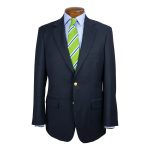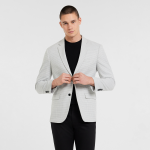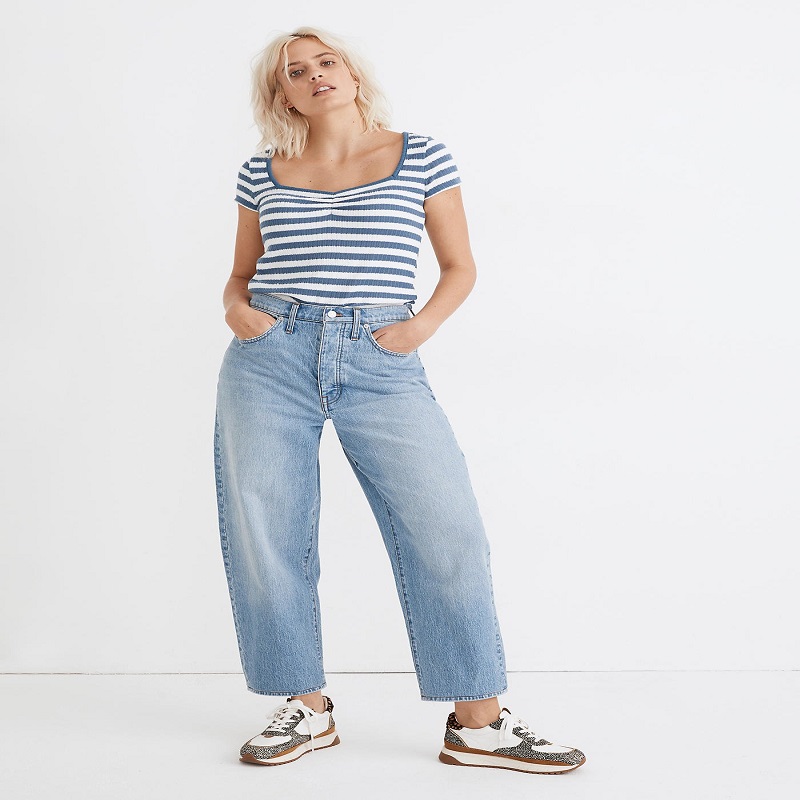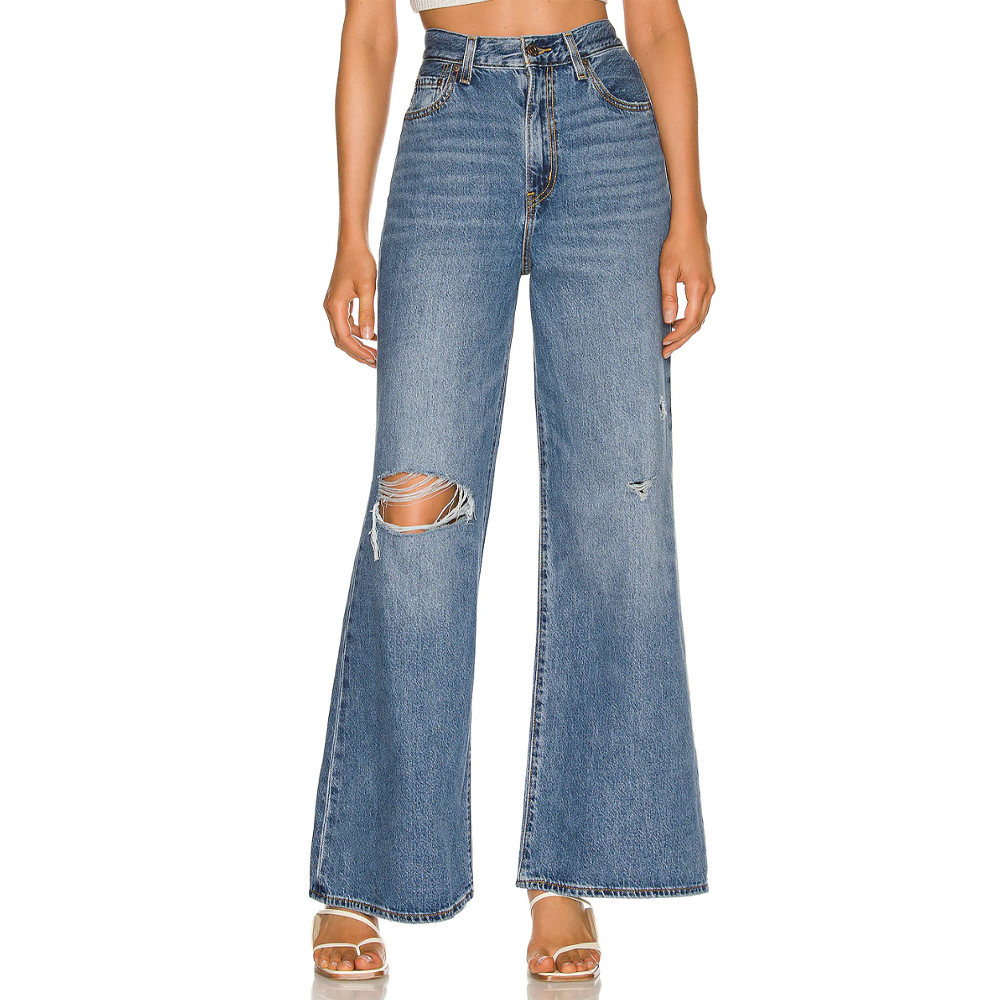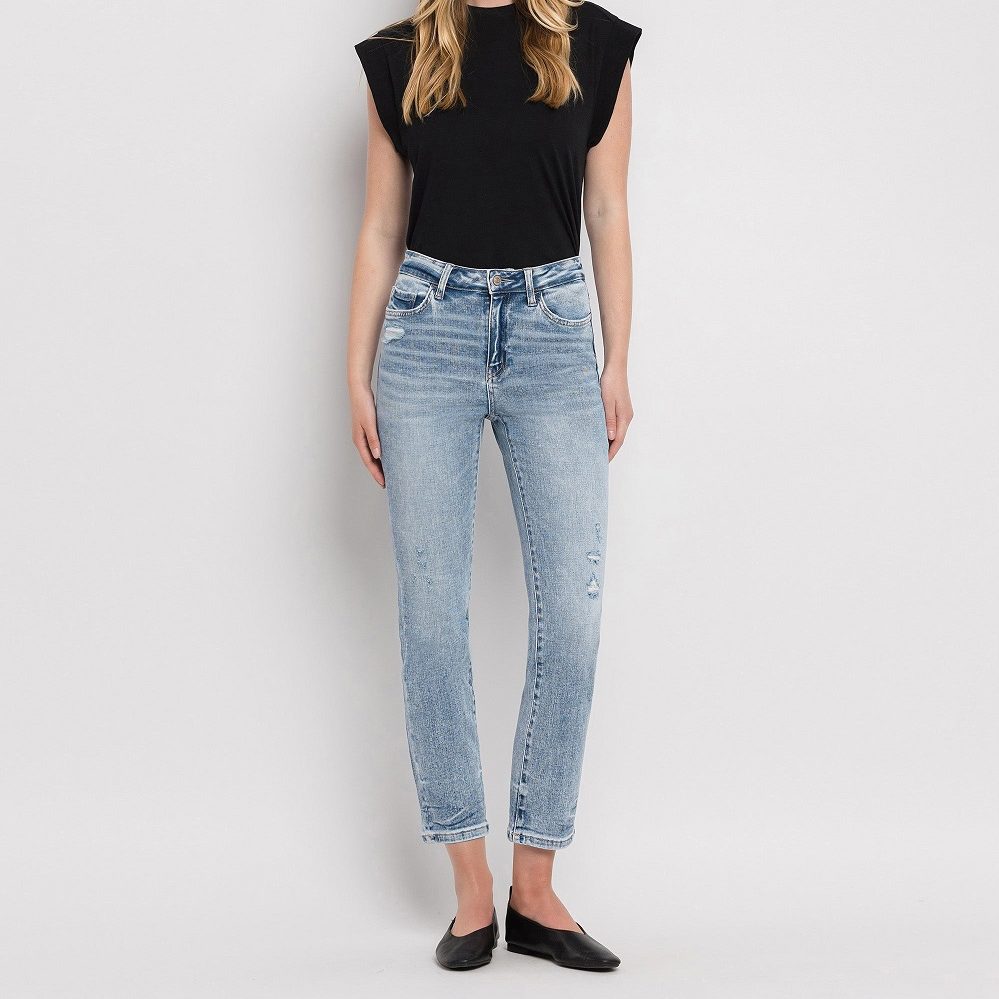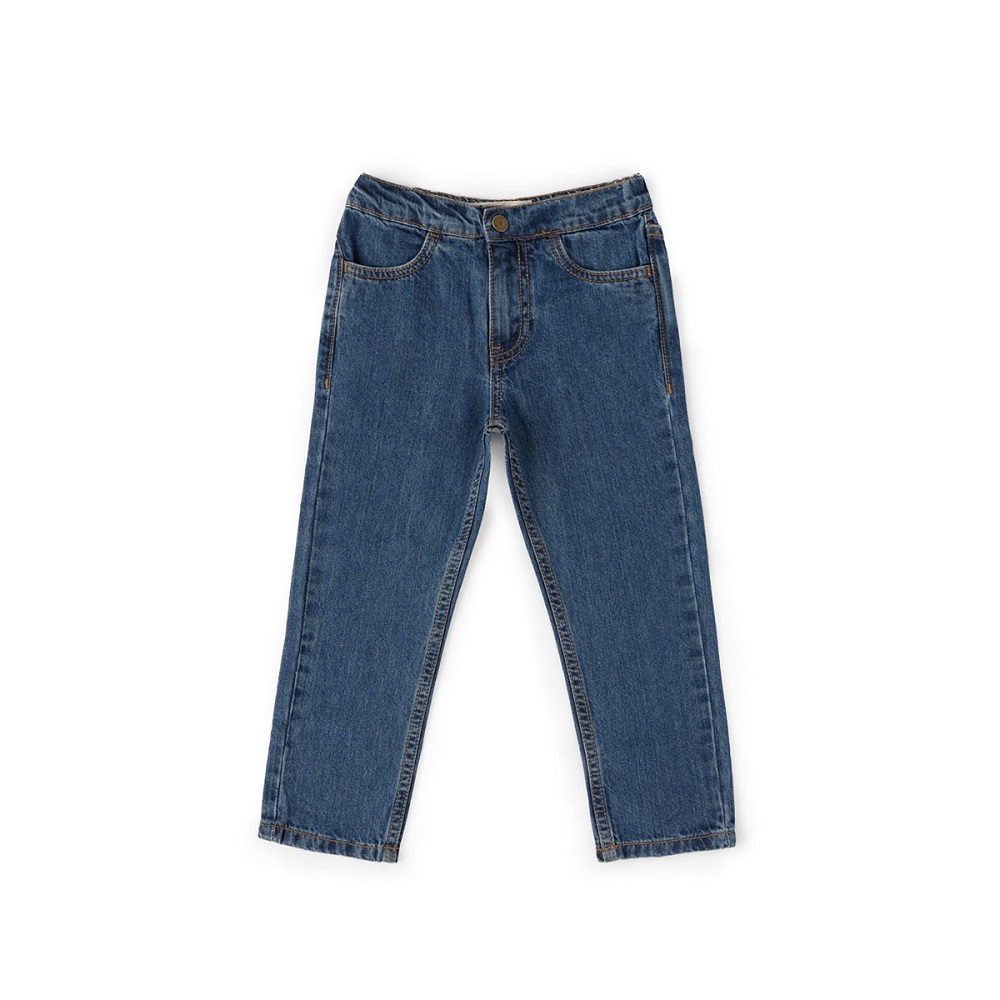How to take in jeans waist? Taking in the waist of jeans is a common alteration that can breathe new life into ill-fitting denim, ensuring a comfortable and personalized fit. Whether you’ve lost weight, prefer a snugger silhouette, or simply bought a pair that’s slightly too big, adjusting the waistband is a straightforward process with the right tools and guidance. This step-by-step tutorial outlines how to take in jeans at the waist, transforming them into a perfect fit for your body.
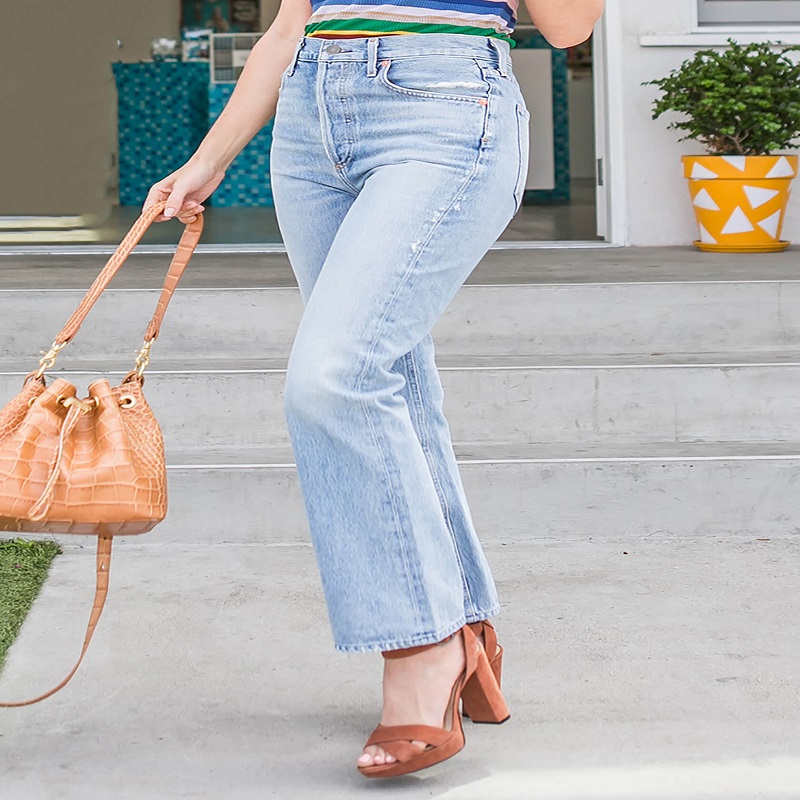
Gathering Materials and Preparation
Before diving into the alteration process, gather the necessary tools and materials:
- Sewing Machine: Essential for stitching strong and durable seams.
- Denim Sewing Needle: Specialized needles designed to penetrate thick fabrics like denim.
- Matching Thread: Choose a thread color that closely matches the color of your wide leg jeans.
- Pins: To hold fabric in place while working.
- Measuring Tape: Accurate measurements are vital for a precise fit.
- Fabric Chalk or Washable Fabric Marker: To mark your alteration lines.
- Scissors: Sharp scissors for cutting excess fabric or threads.
- Iron and Ironing Board: For pressing and preparing the fabric before and after sewing.
- Safety Pins (Optional): To temporarily close the jeans during fitting.
Measuring and Marking
Start by putting on the jeans inside out. Use a measuring tape to determine how much you need to take in the waistband. Mark this measurement evenly around the inside of the waistband using fabric chalk or a marker. Be sure to leave enough room for comfort and movement; a good rule of thumb is to aim for a snug fit without being too tight.
Preparing the Waistband
Lay the jeans flat on your workspace with the waistband facing up. Identify the side seams and mark them clearly. Open the waistband by unpicking the stitches attaching it to the jeans, starting from the side seam and stopping a few inches before the front and back center seams. This will allow you to access the excess fabric in the back.
Pinning and Adjusting
With the waistband opened, fold the excess fabric inward, aligning the new edges according to the marks you made earlier. Use pins to secure the new seam line, making sure it’s even and smooth all around. Try on the jeans again (still inside out) to check the fit. Adjust the pins if necessary.
Sewing the New Waistline
Using a straight stitch on your sewing machine, sew along the pinned line, removing pins as you go to avoid damaging your machine. Reinforce the seam by sewing over it a second time or using a zigzag stitch along the edge to prevent fraying.
Closing the Waistband
Once the new waistline is sewn, carefully reattach the waistband to the jeans, aligning the original stitch lines. Sew this in place, making sure the seam is as invisible as possible from the outside. You may need to hand-sew parts near the zipper and button area for a cleaner finish.
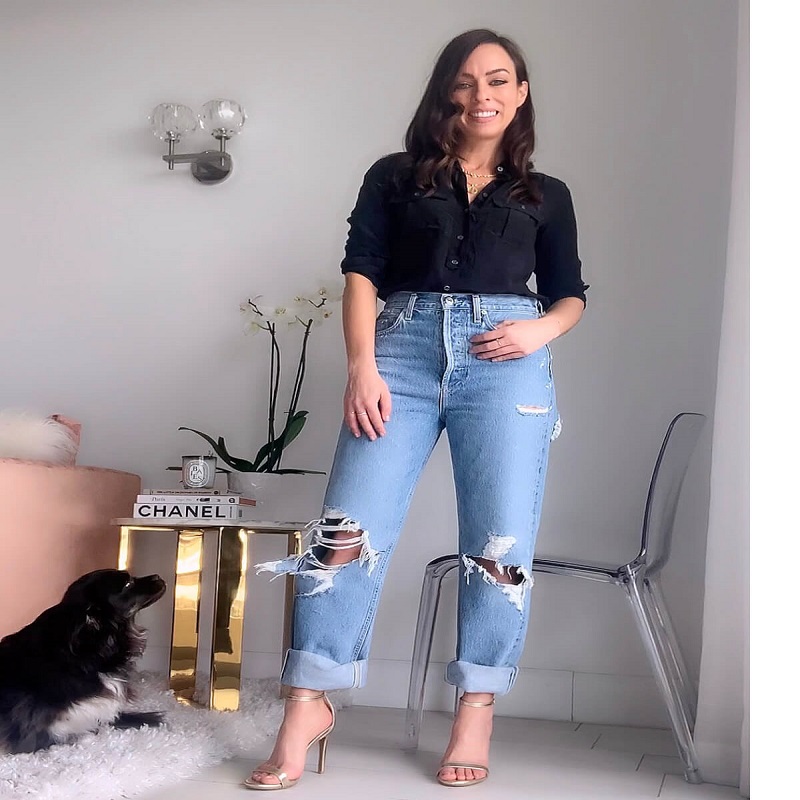
Finishing Touches
Trim any excess threads and press the altered waistband with an iron to set the seams and give a neat appearance. Check all seams for sturdiness and adjust as needed.
Optional Adjustments
If the jeans have belt loops, you might need to adjust their position or shorten them to fit the new waist circumference. Similarly, if the big ass jeans have a back yoke, you might consider taking in the excess fabric there as well for a consistent fit.
How to match jeans fashionably
Jeans, a timeless and versatile wardrobe staple, have evolved beyond their classic roots to become a canvas for endless fashionable expressions. Whether you’re dressing up for a night out or keeping it casual for a weekend stroll, the right styling can elevate jeans from basic to brilliant.
Denim Diversity
Begin by selecting the right type of jeans for your outfit. Skinny jeans offer a sleek silhouette perfect for tucking into boots or pairing with heels for a night out. Straight-leg and boyfriend jeans bring a relaxed, effortless vibe to casual ensembles, while bootcut and wide-leg jeans elongate the legs and work wonders for balancing proportions. High-waisted styles flatter most figures, enhancing the waistline and creating a retro-chic look.
Top It Off
- Blouses and Button-Ups: Tuck a silk blouse or a crisp, collared shirt into high-waisted jeans for a polished yet comfortable look suitable for the office or brunch dates. Add a statement necklace or a silk scarf tied around the neck for an extra touch of elegance.
- Graphic Tees: Combine a classic band tee or a graphic-print top with distressed jeans and sneakers for a casual, street-style inspired outfit. Layer with a denim or leather jacket for a cool, edgy twist.
- Knits and Sweaters: During colder months, cozy up in oversized sweaters or chunky knits paired with slim-fit or straight-leg jeans. Opt for half-tucked styles to maintain a balanced shape, and complete the look with ankle boots or shearling-lined mules.
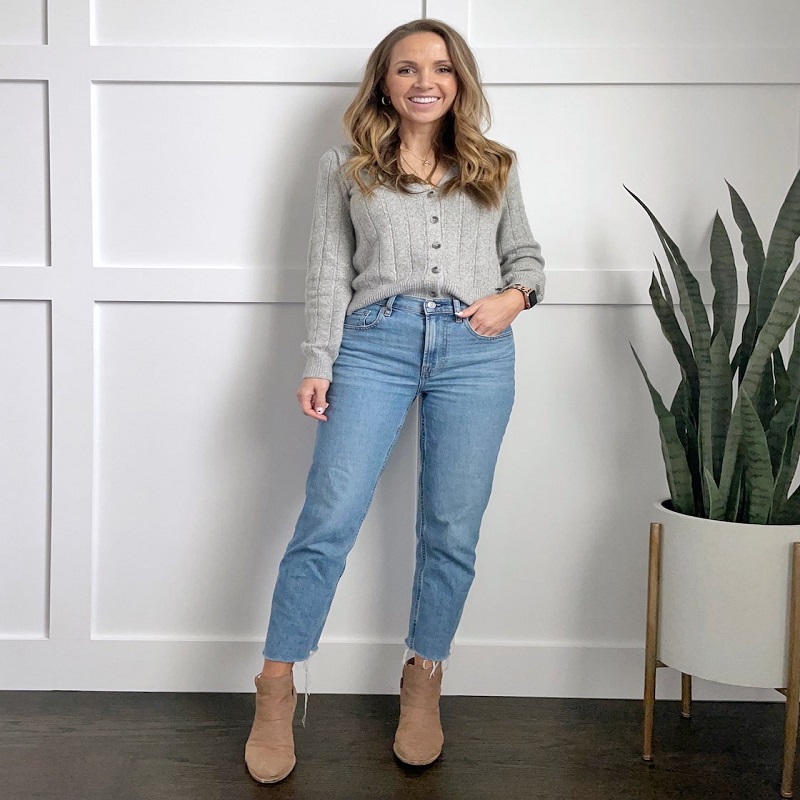
Footwear Matters
- Sneakers: White sneakers are a failsafe option that pairs well with any type of jeans, adding a sporty touch to any outfit. Experiment with colorful laces or unique designs for a playful element.
- Ankle Boots: Whether heeled or flat, ankle boots instantly elevate jeans outfits. Pair them with skinny or straight-leg jeans for a chic, streamlined look.
- Loafers and Mules: For a more refined aesthetic, slip into loafers or mules. These shoes add sophistication to even the most ripped jeans and tee ensemble, making them ideal for smart-casual events.
Accessorize to Elevate
- Bags: Crossbody bags or structured totes in neutral hues complement any jeans outfit, offering practicality without compromising style. For a pop of color, opt for a vibrant clutch or a patterned shoulder bag.
- Belts: Cinch in your waist with a statement belt to define your silhouette. Wide leather belts add a touch of Western flair, while thin, metallic belts add a hint of glam.
- Hats and Jewelry: A classic fedora or a trendy baker boy cap can add a touch of personality to your jeans outfit. Layered necklaces, stacked bracelets, or hoop earrings elevate even the simplest of tops.
Layering Techniques
- Blazers and Jackets: A well-tailored blazer instantly dresses up jeans for a professional setting. Leather jackets bring a rebellious edge, while denim jackets create a casual, timeless look. Layer a long cardigan or a cozy knit sweater over your top for a relaxed, bohemian vibe.
- Scarves and Shawls: Lightweight scarves or chunky knit shawls can add both warmth and style to your ensemble, particularly during transitional seasons.
Color Coordination
Play with color to enhance your jeans outfit. Neutral tops and shoes provide a blank canvas for bold accessories, while monochromatic looks in shades of blue or black create a sleek, sophisticated aesthetic. Don’t shy away from incorporating vibrant hues or prints to make a statement.
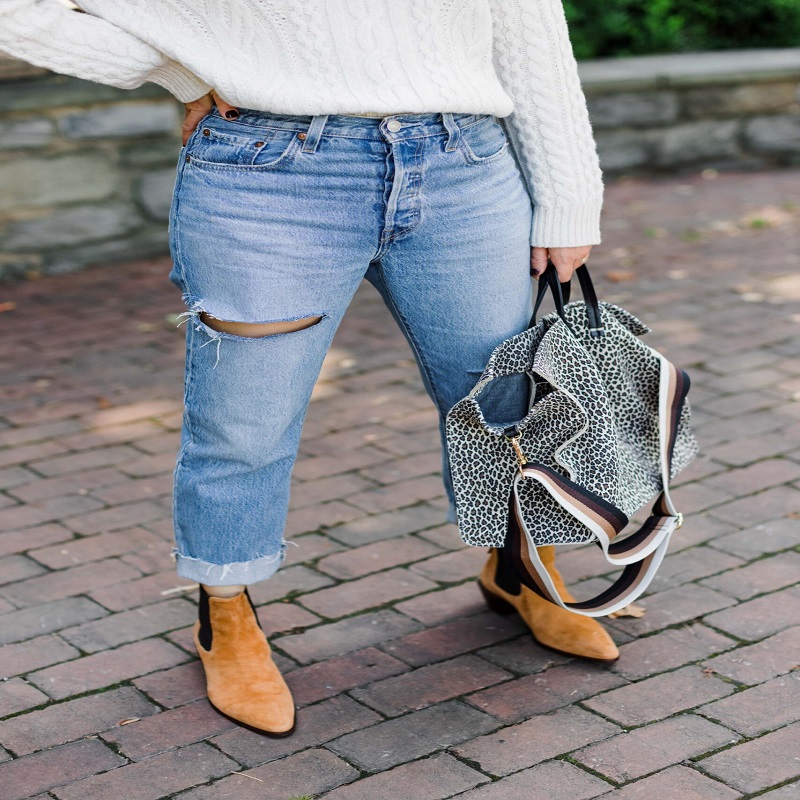
Conclusion
Altering the waist of your jeans not only saves money but also enables you to customize your wardrobe to fit your body perfectly. With patience, precision, and the right tools, taking in the waist of jeans can be a satisfying DIY project that yields great results. Remember, practice makes perfect, and the more you do it, the more comfortable you’ll become with the process. Soon, you’ll be able to tackle other denim alterations with confidence, ensuring that every pair of jeans in your closet fits you just right. So, roll up your sleeves, grab your sewing kit, and give your jeans the custom fit they deserve.


